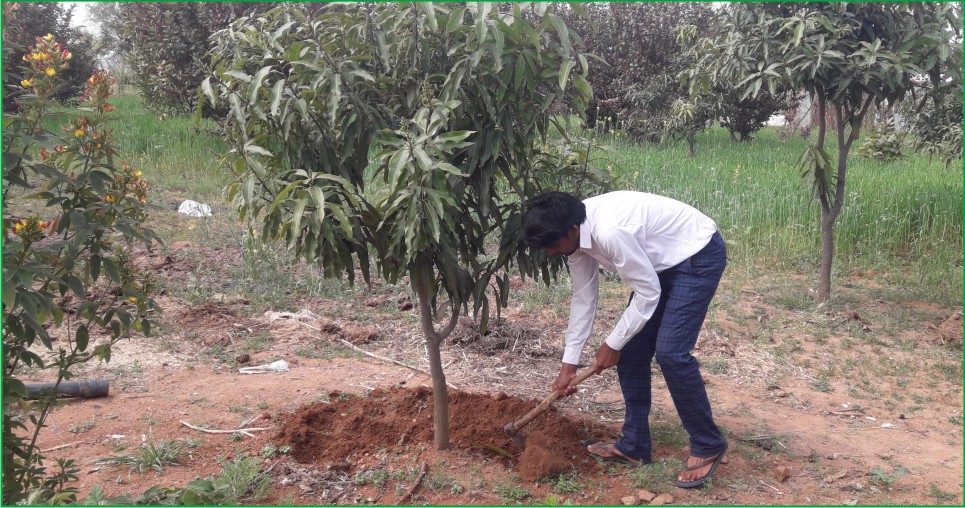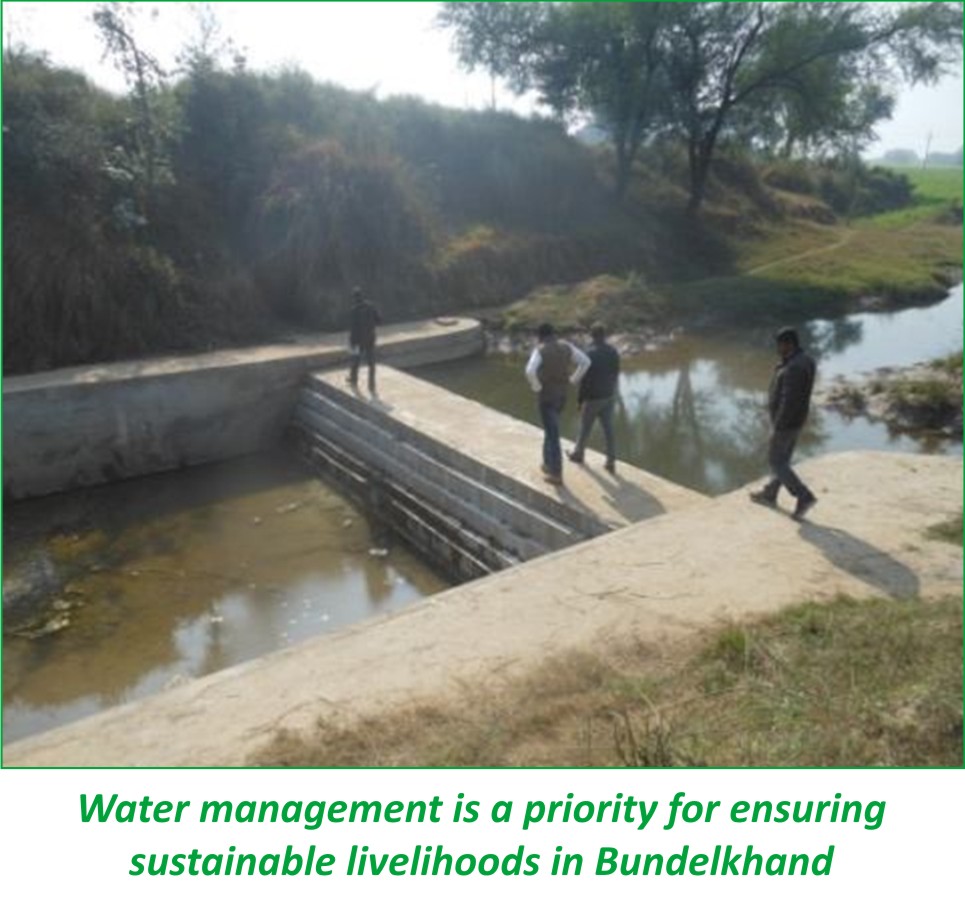|
Vulnerability Converted
into Opportunity:
Agriculture
is a predominant source of livelihood for over 80 percent of the
Bundelkhand community (Patel and Yadav, 2015).
In 2015, Development Alternatives (DA) along
with Coca Cola Foundation, intervened in three villages of Pichhore
block of Shivpuri district, in Madhya Pradesh. DA undertook a baseline
survey to understand the existing and counter the probable threat in
this region. As per observations, out of the 1260 hectares used for
agricultural purposes, 400 hectares of land was left barren. This
amplified vulnerability to availability of water for agricultural
purposes, enhanced threat to the livelihood earning. DA undertook
meetings to raise awareness among all the age groups engaged in
agricultural activities.
One of the success stories of this project, reflects in the happiness of a forty one years old farmer, Angad Singh. Even after owning 4 acres of land, he could use only 1.6 acres of it for agricultural purposes. The dry spell in his region had forced him to migrate to cities for work to support his household’s financial needs. After the introduction of this project in his village, he realised the reasons for loss of soil fertility especially during the monsoons. Angad Singh dug a farm pond on his field to store rain water and use it for irrigation purposes. He also adopted the suggested crop diversification and integrated pest management to boost agricultural productivity. His intercropping practice of vegetables and pulses helped him increase his yield on the land. The 95 fruit trees he grew under this project, helped him earn a profit of 40,000 rupees per year. Additionally, he earned an yearly profit of approximately 50,000 rupees, from the sale of fishes he kept in his farm pond. As a result of all these interventions, his agricultural land space expanded from 1.6 acres to 2.4 acres, which further escalated his profits. He was finally able to bear all his household expenses and send his children to school. ■ References
|
 However, Bundelkhand region is widely recognised for its vulnerability
to availability of water for agriculture and household purposes. The
groundwater recharge is a challenge because of the substratum of
impermeable rock, found at shallow depths across the region. For
instance, from 2003-2010, vulnerability to drought proliferated in all
the districts of Bundelkhand (Ibid.). During this dry spell, a steep
decline in the water reservoirs from 15% to 47% was observed in the
Madhya Pradesh (M.P.) districts of the Bundelkhand region (National
Institute of Disaster Management, 2014). The study also mentions floods
in 2011 in this region. Post this, late monsoons, low rainfall and
drought were observed in 2012, 2013 and 2014 respectively (Manku, 2016).
Migration and suicide rate of farmers substantially increased.
However, Bundelkhand region is widely recognised for its vulnerability
to availability of water for agriculture and household purposes. The
groundwater recharge is a challenge because of the substratum of
impermeable rock, found at shallow depths across the region. For
instance, from 2003-2010, vulnerability to drought proliferated in all
the districts of Bundelkhand (Ibid.). During this dry spell, a steep
decline in the water reservoirs from 15% to 47% was observed in the
Madhya Pradesh (M.P.) districts of the Bundelkhand region (National
Institute of Disaster Management, 2014). The study also mentions floods
in 2011 in this region. Post this, late monsoons, low rainfall and
drought were observed in 2012, 2013 and 2014 respectively (Manku, 2016).
Migration and suicide rate of farmers substantially increased.  After
careful analysis of the baseline survey data, water committees were set
up in these three villages. Their main job was to motivate and assist
farmers by yearly rainfall prediction and outline a watershed plan for
the villages. Within two years, nine check dams and nine farm lakes were
made and hundred fruit trees planted in over one thousand acres of land.
This project generated and improved the livelihood opportunities for
more than one hundred farmers in these villages.
After
careful analysis of the baseline survey data, water committees were set
up in these three villages. Their main job was to motivate and assist
farmers by yearly rainfall prediction and outline a watershed plan for
the villages. Within two years, nine check dams and nine farm lakes were
made and hundred fruit trees planted in over one thousand acres of land.
This project generated and improved the livelihood opportunities for
more than one hundred farmers in these villages.